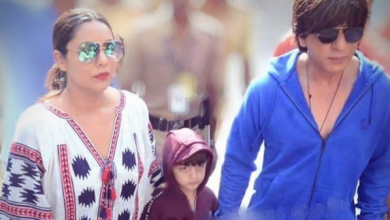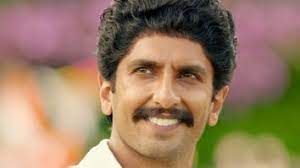Rajinikanth: The one and only Superstar
For those of us who grew up in the 90s, we didn’t discover Rajinikanth from Balachander movies. We were introduced to the Superstar with rousing whistles and cheers in packed theaters as fans went berserk looking at S-U-P-E-R-S-T-A-R appear in dotted block letters with Deva’s now-iconic tune playing in the background.
Superstar Rajinikanth’s debut movie Apoorva Raagangal was released 45 years ago today. He had played a minor role in the film that was headlined by Kamal Haasan. Having been launched by K Balachander, he did a slew of performance-oriented movies during the early days of his career. However, he would soon find out that he had the potential, and the time was ripe to take over the industry’s top position, which was previously held by movie-god MG Ramachandran. And he exceeded all the predictions by creating a permanent position for himself atop the food chain. Like the number 10 jersey in cricket, which was retired with Sachin Tendulkar, the Superstar position in Tamil cinema will retire with Rajinikanth.
Rajinikanth is irreplaceable. And that has been the case for the last 45 years and will remain that way in the years to come. People who have followed him since his early days as an actor may look back in time and rue that he did not become the “actor” that he was supposed to become. That he did not do more movies like Mullum Malarum (1978), Buvana Oru Kelvikuri (1977) and Avargal (1977). That he has been reduced to roles that majorly play to the gallery. That the industry trapped him in an image that required him to repeat his gimmicks like flipping the cigarettes and sunglasses in every film. Maybe, these observations are not entirely unfounded.
But, let’s get real. Rajinikanth would not be where he is today by doing movies like Mullum Malarum. Sure, such films make for a respectable filmography. But, it wouldn’t have helped Rajinikanth achieve the illustrious stardom. Rajinikanth’s conviction in his brand of films not just helped his bank balance grow exponentially, it also expanded the market of Tamil cinema across the country and created a lucrative segment for commercial Indian movies in international markets
The 1995 film Muthu released in Japan in 1998 as Muthu: Odoru Maharaja (Muthu The Dancing Maharaja). And Japanese viewers were charmed by the ‘Maharaja’ of the south Indian box office. The movie ran for 182 days in theaters. It is important to understand that Japanese audiences discovered Rajinikanth at a time when their country was battling a crushing recession. Rajinikanth provided the Japanese audiences with an antidote to the stress caused by a shrinking economy. And the Japanese lapped it up with great enthusiasm, creating a pop-cultural phenomenon. The Newsweek magazine had famously observed at the time that Rajinikanth, “has supplanted Leonardo DiCaprio as Japan’s trendiest heartthrob.”
For those of us who grew up in the 90s, we didn’t discover Rajinikanth from Balachander movies. We were introduced to the Superstar with rousing whistles and cheers in packed theaters as fans went berserk looking at S-U-P-E-R-S-T-A-R appear in dotted block letters with Deva’s now-iconic tune playing in the background. Incidentally, the title intro that has captured the imagination of generations of movie-buffs first appeared in Suresh Krissna’s Annaamalai (1992), which was bankrolled by Balachander.
The experience of watching Rajinikanth movies amid fans was overwhelming. And we took part in that sheer frenzy even before we fully understood the sentiment behind his reverence.
Maybe even Rajinikanth himself is still surprised by the sheer scale of his reach and success. To say his rags-to-riches story is inspiring is an oversimplification. Ask Rajini, he will say it is a making of God. It is because his success story is nothing sort of a miracle.
We are all aware of the struggles he faced in his life as Shivaji Rao Gaekwad before becoming Rajinikanth. But, the challenges that he faced after achieving success as an actor were equally daunting, and they don’t get discussed a lot.
.
The quick success allowed the young Rajinikanth to indulge in his vices. He had to battle a serious drinking problem and the ensuing controversies. Having come from a humble background, he seemingly suffered from the fear of missing out at work. He shot for movies non-stop with little to no rest, and that caused him to behave harshly in public. He suffered a nervous breakdown very early on in his career. That could have ended his career at the time. But, it didn’t. He emerged out of that trying phase and made the most out of the opportunity that was offered to him.
That’s the reason Rajinikanth sits so lightly on his superstardom. He perhaps believes that some Friday he may not be able to sell as many tickets as he used to. And it can all go away.
And maybe that’s why he has turned to spirituality – to protect himself from his stardom. Rajinikanth is fond of his annual trip to the Himalayas. He usually travels light, especially free from the baggage of his megastar status. He has reached stars, but his legs are still firmly on the ground.
A close study of Rajinikanth’s life holds valuable lessons on how to stay atop the chain of stardom for 45 years. There are lessons for ‘godfatherless’ newcomers on how to handle failure and success alike, why they should not take their star status seriously, and the benefits of believing in something bigger than oneself.






